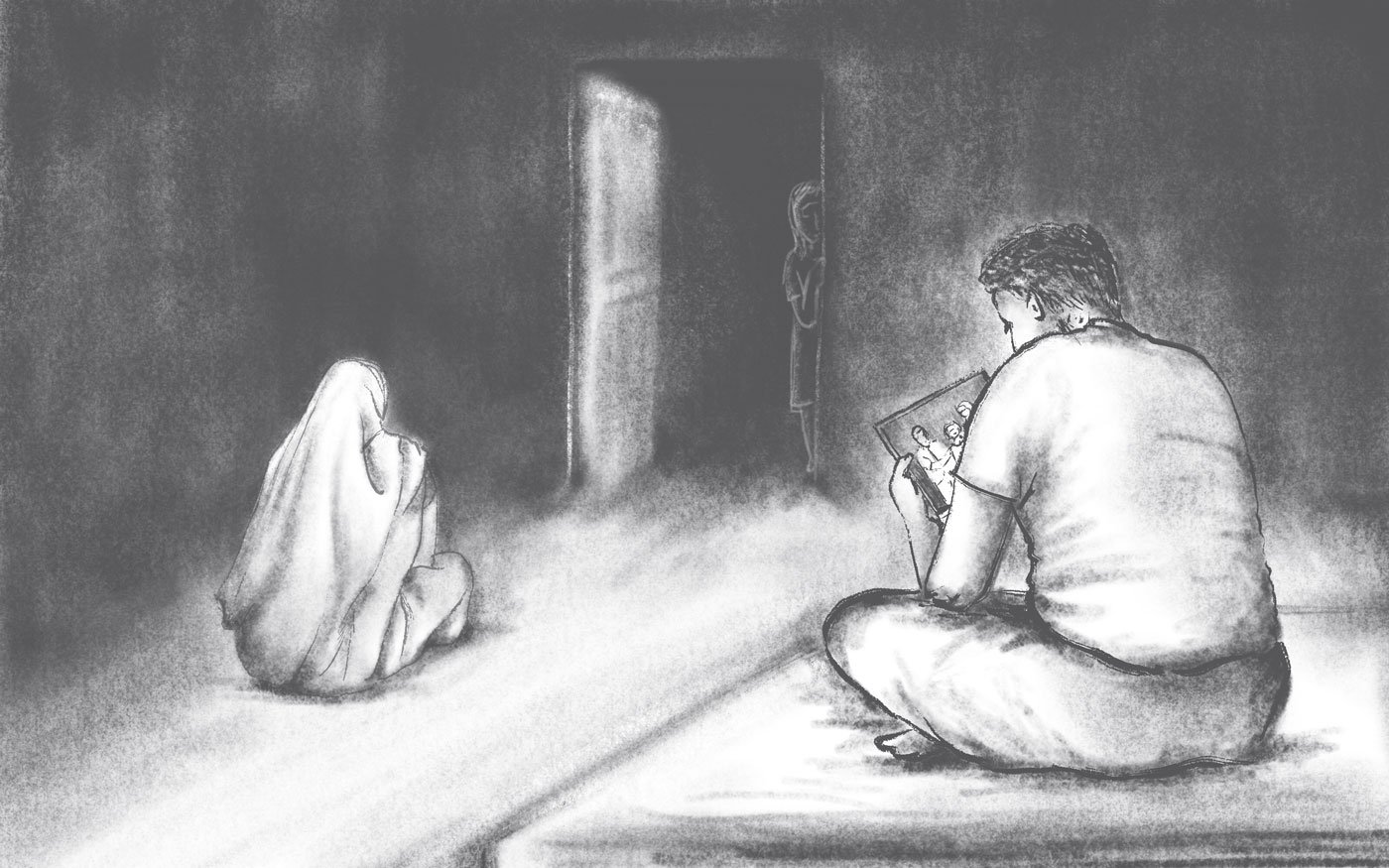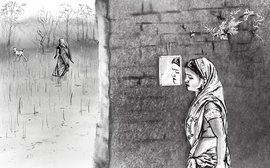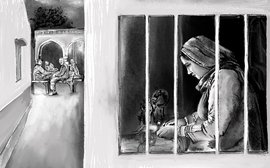The driver assured her he would drop her home, but the car continued racing in the opposite direction. When he didn’t make the first U-turn on the highway, Neha thought he had unwittingly missed it. The 15-year-old’s suspicion grew after the second U-turn came and went. The third time it happened, she panicked. Her eyes teared up; she felt ill.
Uneasy and unsure, she cried out to see her parents. The woman seated next to her in the car and the driver tried to calm her down, telling her not to worry.
But deep down, Neha knew she was in big trouble. It had been an impulsive decision to leave home, and she was already regretting it.
Earlier in the year, in May 2023, the teenager had got into an argument with her parents who felt she was spending more time on her phone and less time with her books. The spat concluded with Neha’s phone being confiscated.
“I was extremely angry that my parents had taken away my mobile phone,” she says in a low voice, not making eye contact. “I just wanted to get away from them.”
So she left home around 6 a.m. and navigated the narrow streets of her neighbourhood to reach the highway. Still angry at her parents, she walked about 7-8 kilometres along the highway before realising she had come too far. By now the sun had been out for a few hours and she was thirsty, but didn’t have the money to buy a bottle of water.
A shiny black sedan stopped in front of her. “There was a man driving the car, and a woman in the back,” Neha recalls. The woman lowered the window and asked Neha if she wanted a lift back home. “They seemed like nice people. I was too tired to walk all the way back, and I didn’t have money for the bus ticket.”
Neha accepted their offer. The air conditioner relaxed her, she threw her head back and wiped the sweat from her forehead with a handkerchief. The woman offered her a water bottle.
But the relief soon turned to dread when the man continued to drive away from her home. She tried shouting and protesting but the car finally stopped only an hour later. They had reached Bhopal. Neha had been kidnapped.
In India, a total of 4,03,825 children went missing between 2016 and 2021. The state of Madhya Pradesh consistently tops the chart in this distressing statistic – in the same period, the state officially recorded 60,031 cases (National Crime Records Bureau). In 2022, 11,717 children went missing according to a RTI request by Child Rights and You (CRY). That is an average of 10,250 missing children in a year, or 28 per day – more than any other state in India.
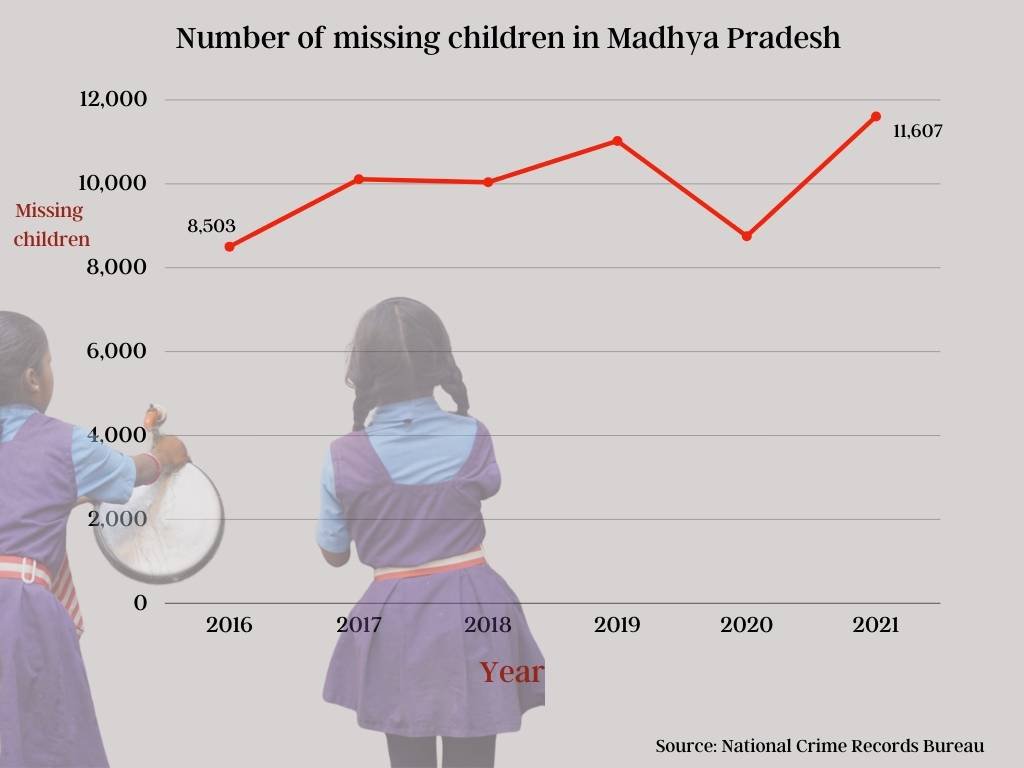
Madhya Pradesh consistently has the highest numbers of children that go missing in India
And like Neha, an overwhelming 77 per cent of the missing children – 55,073 – are girls. “But even these numbers [of missing children] are likely to be a conservative estimate because several missing cases from remote areas aren’t reported,” says Sachin Jain, Bhopal-based activist working with Vikas Samvad Samiti, a non-profit organisation dedicated to children’s rights which maintains data on missing children in Madhya Pradesh.
Meanwhile, back home in their one-room shack on the outskirts of the city, Neha’s parents Priti and Raman had begun an urgent search, banging on their neighbours' door and calling up relatives. “I felt guilty and blamed myself,” says Priti. “We ran around the whole neighbourhood but she was nowhere. We thought she would be back by afternoon.” They approached the local police station the following day and filed a missing complaint.
The couple are daily wage labourers in different factories around Bhopal, earning Rs. 8,000-10,000 a month between them. “We have always wanted to educate our children at any cost so they can have better jobs,” says Priti.
She and her husband are landless migrants who came from Uttar Pradesh 20 years ago; they belong to a Other Backward Class community. “You don’t want your kids to go through the humiliation and exploitation of being a labourer. That’s why we were a bit hard on her to study more.”
Like young Neha, adolescents who leave their homes after fights with their parents, teenagers who fall in love and elope are just one of the many categories of missing children of which trafficking for sex or labour is one of the most insidious. “Contractors take children from one place to another for work. There is a whole nexus behind this kind of child labour,” Jain says.
*****
Neha was taken to a flat in Bhopal and was not allowed to leave or contact anyone. The couple told the neighbours she was their cousin’s daughter and started to call her Sana; she was beaten when she refused to respond to the new name.
The runaway teenager was physically and sexually abused. The couple would make her do endless household chores, cleaning rooms and washing utensils. When she finally found the courage to plan an escape, she was caught and punished. “I had given up hope of returning home,” she recalls. “I couldn’t believe it when the police rescued me.”
The police tracked her down using CCTV footage of her walking along the highway but it took them a few days to find her in Bhopal. The couple were arrested for kidnapping and charged under the Protection of Children from Sexual Offences (POSCO) Act, 2012, and Child Labour (Prohibition and Regulation) Act, 1986.
When she got home, her parents broke down in relief. “We will be forever grateful to the police,” Priti says.
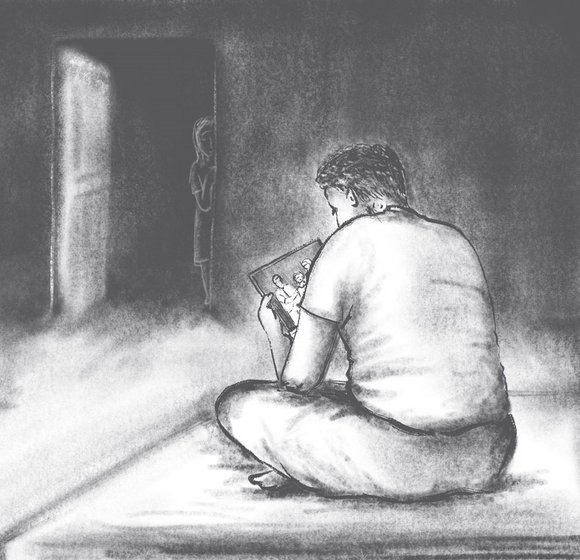
Like young Neha, adolescents who leave their homes after fights with their parents, teenagers who fall in love and elope are just one of the many categories of missing children of which trafficking for sex or labour is one of the most insidious.
Neha was fortunate enough to be traced relatively quickly but the frequency of cases raises a larger concern, believes Jain. “This is not just a law and order problem,” he says. “It is a societal problem. Society is struggling to manage the physical, emotional and mental challenges of children and adolescents of today’s times.”
Over the past seven years in which more than 70,000 children went missing in Madhya Pradesh, the state police have maintained a consistent 60-65 per cent recovery rate every year. But even one child missing is one child too many. There are more than 11,000 children currently leading a life they weren’t meant to and parents and their families living in fear and uncertainty over the kind of atrocities their child might be subjected to.
Lakshmi and Nitish have been replaying various scenarios in their heads over and over again ever since their 14-year-old daughter Pooja went missing in mid-August. The police haven’t been able to trace her yet, and her case is still open.
“Dimag kharab ho gaya [It has completely messed with our heads],” says Nitish. “We try to think positive thoughts as much as possible. But it is impossible to not wonder what our daughter must be doing. ”
One morning, Pooja left for school but never returned. CCTV footage shows her halfway to school but she disappears after. The parents feel she had planned it as she left her phone at home that day, something she never did. “The police looked at her call records and found that she was talking to a boy regularly,” says Nitish. “She used to be on her phone a lot but we respected her privacy. We thought this is the age when they always want to chat with their friends,” says the 49-year-old father.
The boy Pooja was speaking to was her age and someone they knew from a village in Uttar Pradesh. The police have been trying to locate him and Pooja, but haven’t found either.
Nitish and Lakshmi have come to terms with the circumstances and continue to go to work everyday. The two, now in their late forties, migrated from a village in western Bihar some 30 years ago for work. “We knew somebody who had migrated here,” says Nitish. “He advised us to come and find work.”
The couple work as daily wage labourers, saving up to move from a hut to a concrete house, and to save for their children’s education and marriage. Working 12-14 hours a day they manage to earn Rs. 9,000 a month. Nitish wonders if the long hours led him to neglect his daughter. “We just took whatever work that came our way because we wanted a better life for our kids. Did we fail as parents that she couldn’t talk to us about it?”
Pooja was a bright student and dreamt of pursuing higher education. Her elder sisters had married at the ages of 20 and 22 but she aspired to become a police officer. Her parents wonder if she has abandoned her dream, if she misses them. They wonder if she has been taken against her will and if they will ever see her again.
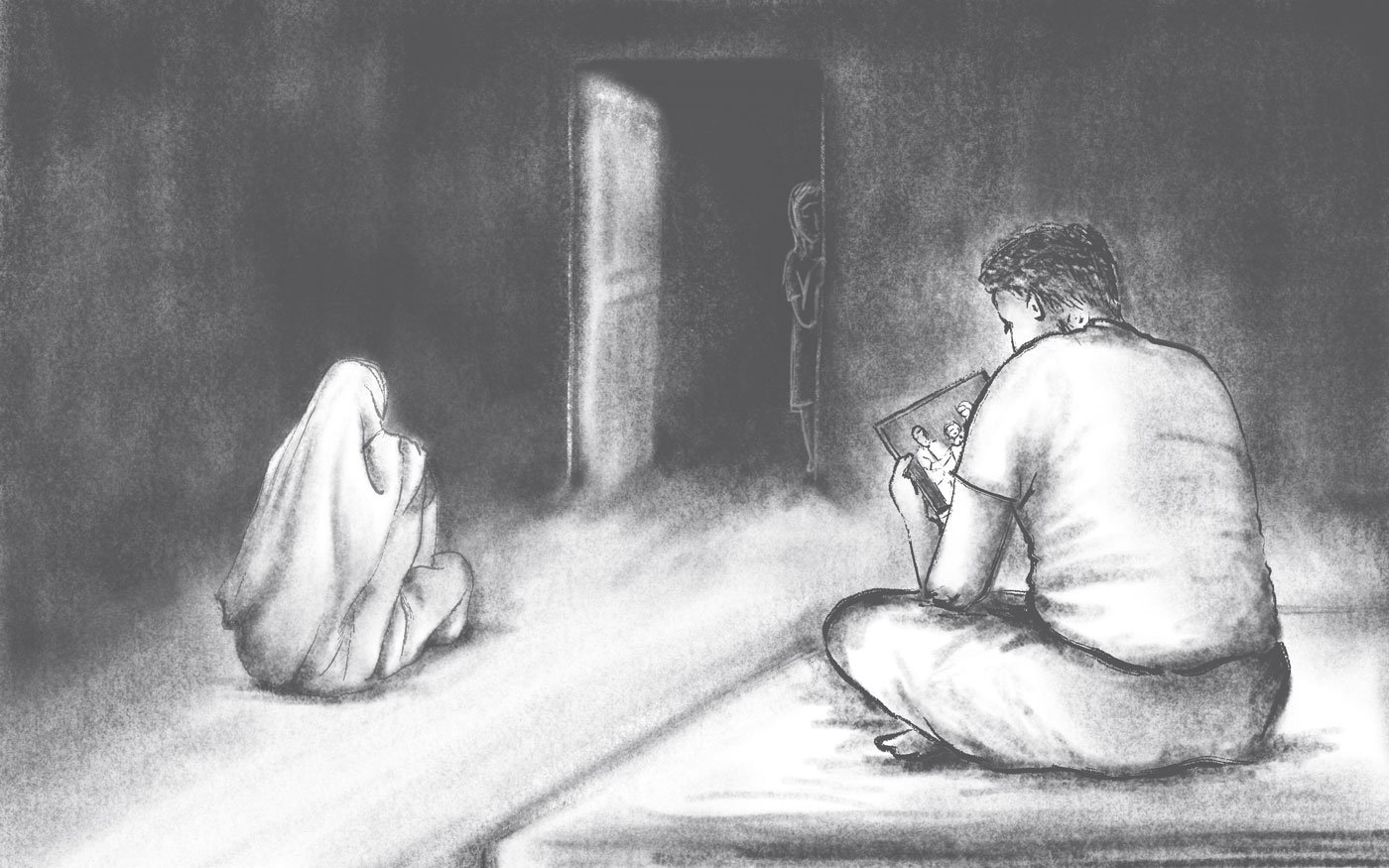
Pooja's parents wonder if they will ever see their daughter again
“There are so many news articles with horrible stories of what happens to girls that go missing,” says Lakshmi who hasn’t slept well since her daughter went missing. “I have all these scary thoughts that I can’t get rid of. The atmosphere at home is like a funeral.”
As per the standard operating procedure, if a missing minor remains untraced for four months, the case is supposed to be transferred to the anti human trafficking unit (AHTU) in the district.
Once transferred to the unit, it is investigated with much more intensity, seriousness and focus, says Jain. “But the state often avoids that because it is bad PR to have trafficking numbers shooting through the roof.” These unfortunate cases lie buried with the local police and delay finding of a missing child.
*****
After the children are found, it is important to rehabilitate them as they have gone through a traumatic experience. They are often in a vulnerable mental state.
Rekha Shridhar, a child rights activist based in Bhopal says that there aren’t enough professional psychologists in Madhya Pradesh’s government hospitals, adding that most are in cities. “It means that traumatised children from remote areas are deprived of recurring counselling sessions that they desperately need,” she says and adds that, “the parents are not equipped to deal with it at home because they are struggling with their own financial problems and there is a general lack of awareness around how to handle a mental health patient.”
Shridhar stresses on the importance of counselling. “Children could sink into depression and develop suicidal tendencies,” she says. “It could have a long term impact on their psyche and affect every relationship they might have in the future.”
It has been about five months since Neha has returned home. She has had four to five counselling sessions since then but she is still not quite herself. She took some time to process the fact that she is home and safe. Those 17 days felt like eternity to me,” says Neha.
She has rejoined school but is not confident to go by her own. Her brother drops her and picks her up every day. Neha, who used to be an extrovert, is now afraid of meeting new people and doesn’t make eye contact.
The family lives in a brick-walled one-room kitchen, covered with a tin-roof, where they all sleep next to each other on the floor. For Neha, that triggers disturbing memories. “She hasn't slept peacefully ever since she returned,” says Priti. “Whenever someone sleeping next to her moves in their sleep, she wakes up in the middle of the night crying for help. It takes a while to calm her down.”
Names of all characters have been changed to protect the identity of minors mentioned in the story.
